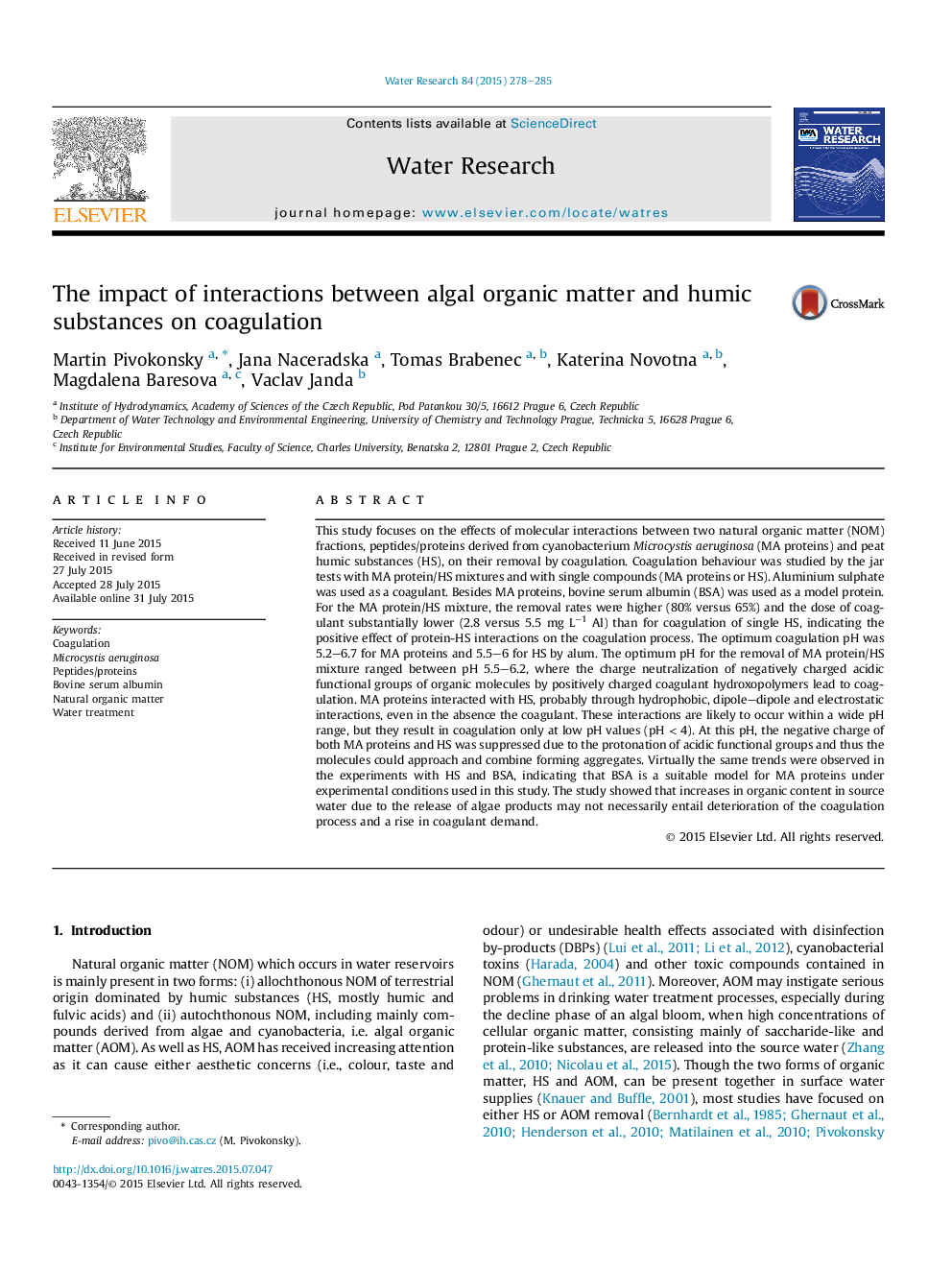| کد مقاله | کد نشریه | سال انتشار | مقاله انگلیسی | نسخه تمام متن |
|---|---|---|---|---|
| 4481095 | 1623084 | 2015 | 8 صفحه PDF | دانلود رایگان |
• Proteins and humic substances (HS) interact during coagulation.
• The interactions between proteins and HS lead to a decrease in coagulant demand.
• The optimum pH for the removal of proteins and HS by alum ranges between 5.5 and 6.2.
• Proteins and HS coagulate in the absence of coagulant at pH < 4.
• Bovine serum albumin is a suitable model for proteins of Microcystis aeruginosa.
This study focuses on the effects of molecular interactions between two natural organic matter (NOM) fractions, peptides/proteins derived from cyanobacterium Microcystis aeruginosa (MA proteins) and peat humic substances (HS), on their removal by coagulation. Coagulation behaviour was studied by the jar tests with MA protein/HS mixtures and with single compounds (MA proteins or HS). Aluminium sulphate was used as a coagulant. Besides MA proteins, bovine serum albumin (BSA) was used as a model protein. For the MA protein/HS mixture, the removal rates were higher (80% versus 65%) and the dose of coagulant substantially lower (2.8 versus 5.5 mg L−1 Al) than for coagulation of single HS, indicating the positive effect of protein-HS interactions on the coagulation process. The optimum coagulation pH was 5.2–6.7 for MA proteins and 5.5–6 for HS by alum. The optimum pH for the removal of MA protein/HS mixture ranged between pH 5.5–6.2, where the charge neutralization of negatively charged acidic functional groups of organic molecules by positively charged coagulant hydroxopolymers lead to coagulation. MA proteins interacted with HS, probably through hydrophobic, dipole–dipole and electrostatic interactions, even in the absence the coagulant. These interactions are likely to occur within a wide pH range, but they result in coagulation only at low pH values (pH < 4). At this pH, the negative charge of both MA proteins and HS was suppressed due to the protonation of acidic functional groups and thus the molecules could approach and combine forming aggregates. Virtually the same trends were observed in the experiments with HS and BSA, indicating that BSA is a suitable model for MA proteins under experimental conditions used in this study. The study showed that increases in organic content in source water due to the release of algae products may not necessarily entail deterioration of the coagulation process and a rise in coagulant demand.
Figure optionsDownload high-quality image (333 K)Download as PowerPoint slide
Journal: Water Research - Volume 84, 1 November 2015, Pages 278–285
